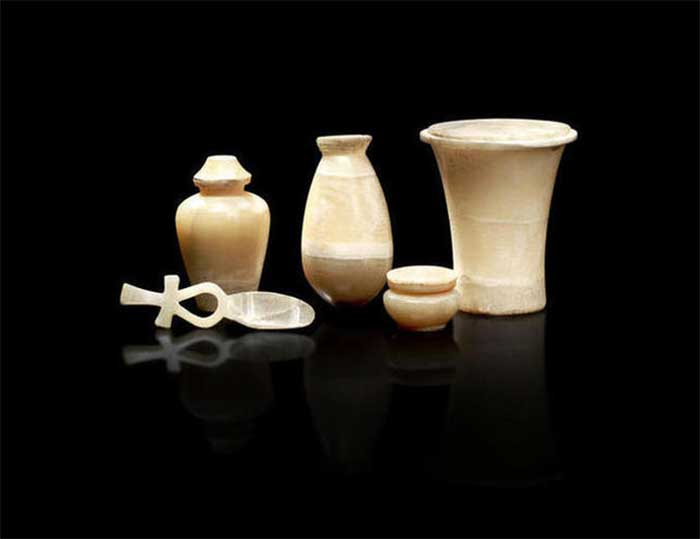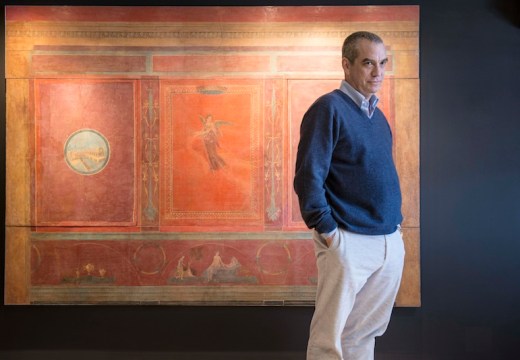Two particularly newsworthy acquisitions were brought to our attention this month: the Metropolitan Museum has prevented a group of ancient Egyptian artefacts from being broken up, and Tate took to Frieze London to bolster its holdings of post-war and contemporary art.
Metropolitan Museum of Art
‘Treasure of Harageh’ ancient Egyptian artefacts
The Metropolitan Museum has stepped in to buy a significant collection of Middle Kingdom Egyptian artefacts. The tomb group, which includes a selection of travertine vessels and rare items of jewellery, was excavated a century ago by an archaeological team lead by William Matthews Flinders Petrie, and had been put up for sale by the St Louis Society. The acquisition was made in advance of the scheduled auction at Bonhams in early October.
Tate Collection
Works by Harun Farocki, General Idea, Lubaina Himid, Bernardo Ortiz, and Slavs and Tatars, from Frieze London
Since 2003, Tate has acquired 100 works from Frieze with the help of the Outset Contemporary Art Fund. This year, it added six new pieces to its collection, including Parallel I–IV (2012–14) and Workers leaving the Factory in 11 Decades (2006) by the respected German film maker and video artist Harun Farocki, who died this year. Tate also acquired AIDS (Wallpaper installation) (1988) by General Idea, and The Carrot Piece (1985) by Lubaina Himid, while two recent works – Untitled (2006–14) by Bernardo Ortiz, and Love Letters (No. 7) by the art collective Slavs and Tatars – were donated to the museum by Frieze.
Unlimited access from just $16 every 3 months
Subscribe to get unlimited and exclusive access to the top art stories, interviews and exhibition reviews.














![Masterpiece [Re]discovery 2022. Photo: Ben Fisher Photography, courtesy of Masterpiece London](http://www.apollo-magazine.com/wp-content/uploads/2022/07/MPL2022_4263.jpg)
Has the Fitzwilliam lost the hang of things?